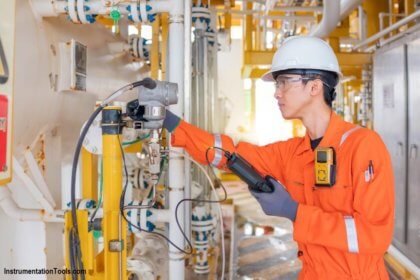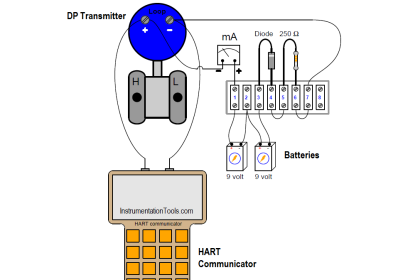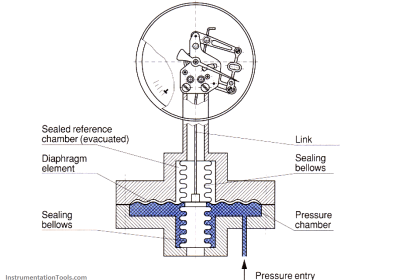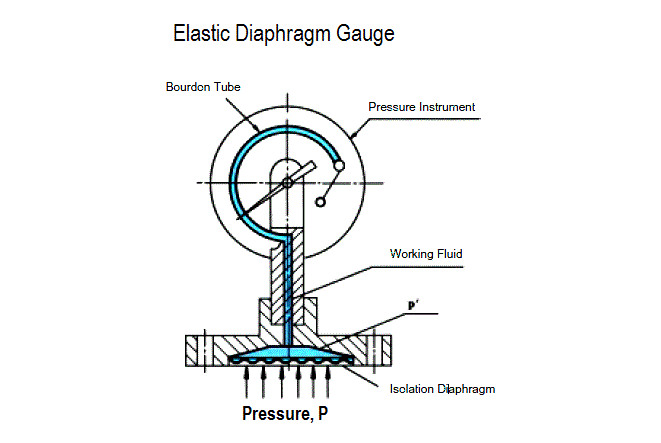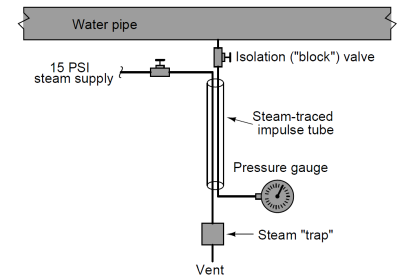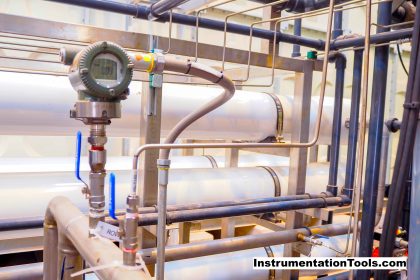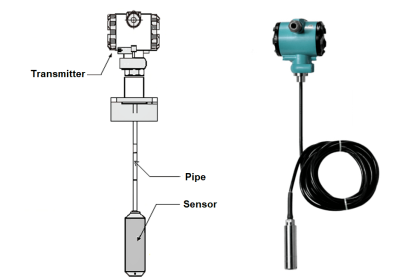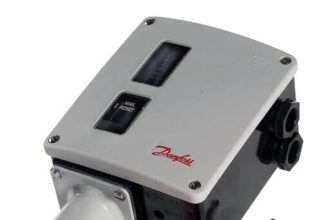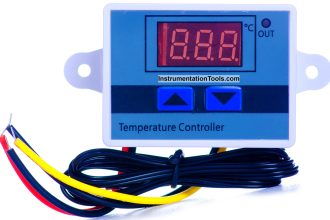Pressure is a very important parameter in industrial applications. Various types of gauges are used to measure pressure. A gauge is generally mounted on a skid pipeline and shows the current value in scales.
Out of them, one of the most popular ones is a Bourdon tube pressure gauge. In this post, we will see the concept of the Bourdon tube pressure gauge and find its advantages and disadvantages.
What is a Bourdon tube?
A Bourdon tube is a pressure measurement gauge device that is used for measuring pressure. It is a circular tube which is bent and housed in a metal enclosure.
In this tube, one end is exposed to media pressure and the other end is closed. It is closed so that it can move freely and give us pressure value.
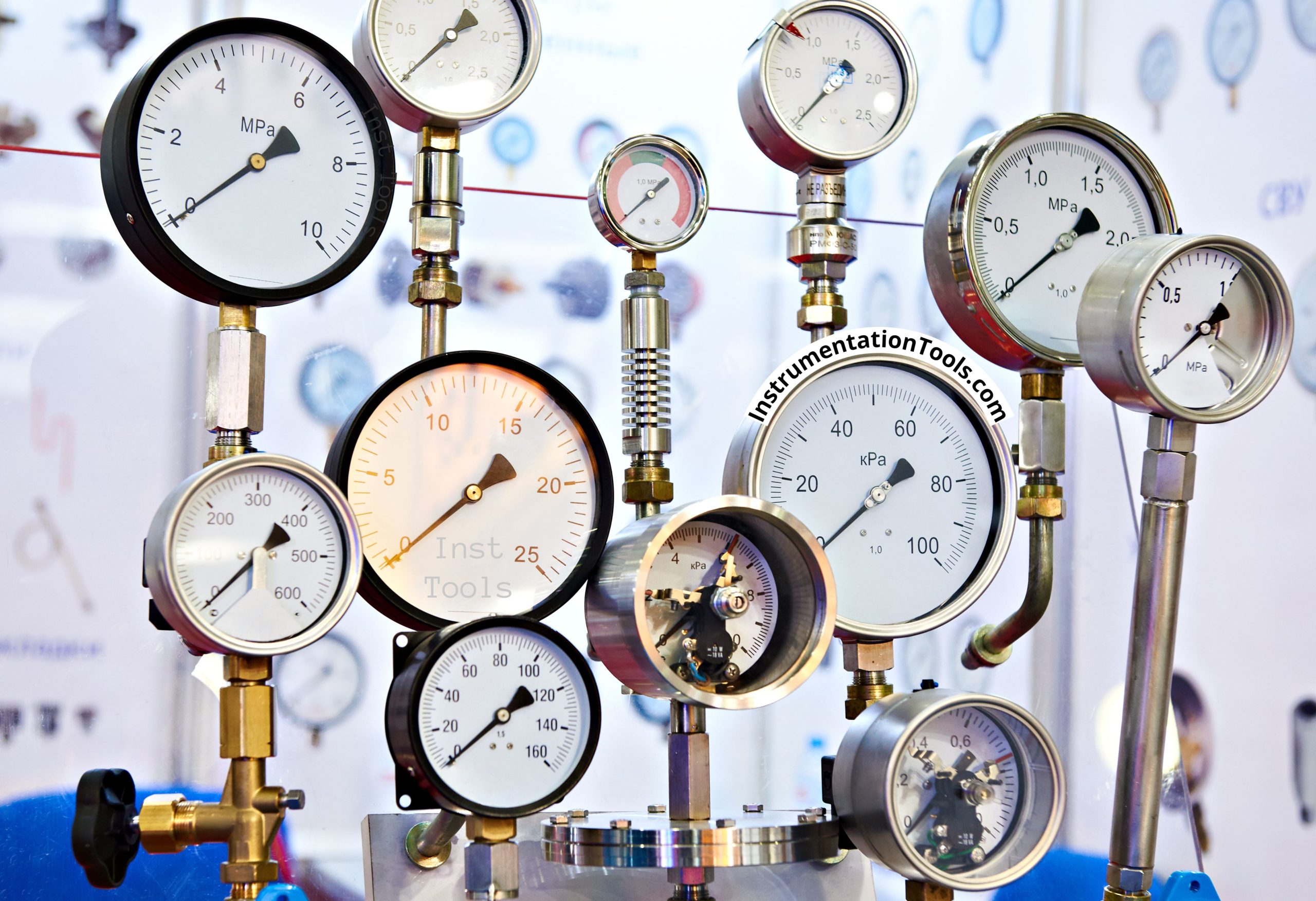
The tube is generally made of phosphor bronze, steel, or beryllium copper. These materials are instantly deflected when a pressure is applied to it. The deflection observed is proportional to the pressure applied. Refer to the below image for it’s working.
The tube is connected to a link, which when moved, also moves the pointer along with it. This pointer is nothing but the scale reading that we see on the meter. So, when a fluid pressure is applied in the tube, it starts to deflect. The more the pressure, the faster it will bend and correspondingly move the pointer quickly.
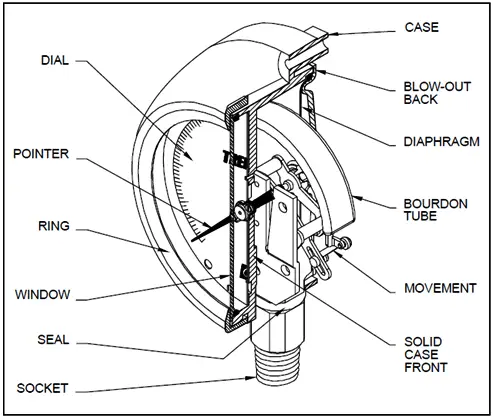
As the pressure reduces or becomes zero (moves away from the tube), the tube again starts to retract to its original position and the pointer too moves towards its original position.
In fact, the working is very clear from the image itself; pressure moves the tube, the tube moves the link along with it, and the link moves the pointer attached to it. Bourdon tube is usually practically filled with high-density media like water to avoid rapid fluctuations in readings, as the water will densely mix with the media to be measured.
This is depending upon the media to be measured. If the media is slow already and has a higher density than water, then no water is filled. Other internal components are mostly lubricated with silicone oil or glycerine for smooth movement and to prevent it from rust.
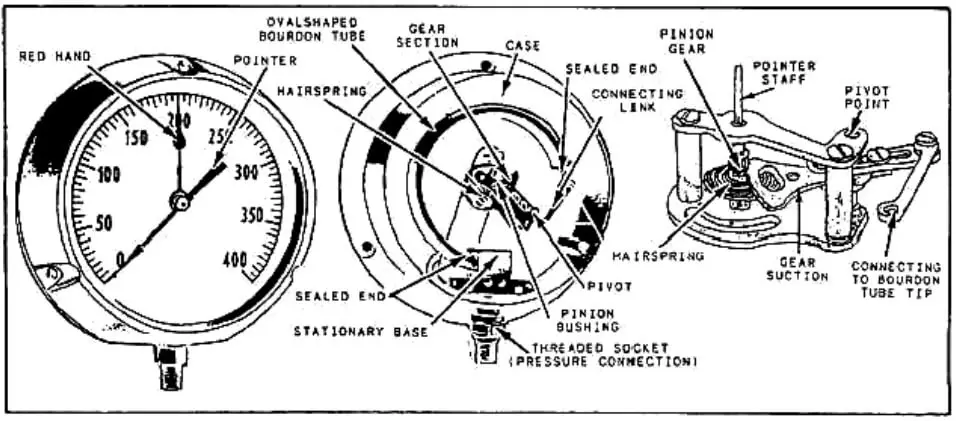
Advantages of bourdon tube
- As the working is pretty simple, bourdon tube pressure gauges are generally preferred in industrial applications for the simplicity they provide in maintenance.
- The readings of this scale are very accurate and that is why too, they are more preferred than other types.
- They work properly even in high-pressure conditions, so media with high pressure can also be applied in this tube for measurement.
- The installation and maintenance cost of this measurement is budget-friendly.
- It can also be used to measure vacuum pressure and other types of negative pressure inputs.
Disadvantages of bourdon tube
- They sometimes act slowly in response to pressure.
- They are sensitive to temperature changes and tend to malfunction more at lower temperatures.
- Shocks and vibrations many times hamper the performance of the gauge, as you get improper readings. It is also not good for the life of the gauge in longer terms.
- It is not generally used for low-pressure applications, as the tube requires a good amount of force to move it.
If you liked this article, then please subscribe to our YouTube Channel for Instrumentation, Electrical, PLC, and SCADA video tutorials.
You can also follow us on Facebook and Twitter to receive daily updates.
Read Next:
- Pressure Gauge Problems
- What is Submersible Pressure Transmitter?
- Bourdon Tube Pressure Gauge Animation
- Pneumatic Systems in the Automotive
- Mounting Techniques of Diaphragm Seals

